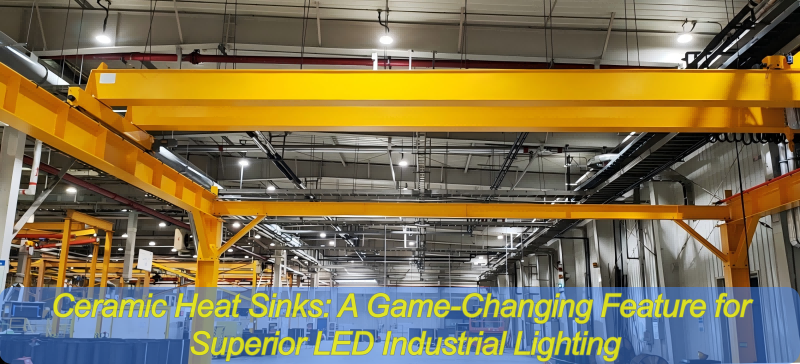Sansi LED: Sustainable LED Lighting and Integrated LED Display
Delivering premium and professional LED Display, LED Lighting, Smart City Integration solutions, trusted by over 60,000 companies worldwide everyday. From industrial lighting to commercial lighting, from outdoor advertising to XR & VR production, Sansi LED greatly improves the quality and sustainability of your business with 30 years of expert experiences.
The Superiority of LED High Bay Lights
High bay lights available on the market generally fall into two categories: traditional lighting (such as incandescent, halogen, and fluorescent lamps) and modern LED high bay lights. The latter is rapidly replacing traditional options due to its significant advantages, including energy efficiency, environmental friendliness, long service life, dimming capabilities, and broad applicability.

The Critical Challenge: Heat Management
Although LED high bay lights operate at much lower temperatures than standard Metal Halide or High-Pressure Sodium lights, heat remains their primary enemy. Excessive junction temperature is the leading cause of accelerated LED light decay and shortened lifespan. When the junction temperature exceeds the maximum allowable threshold, the LED can suffer irreversible heat damage. Therefore, evaluating a fixture's heat dissipation capability is essential when selecting industrial lighting.
The Superior Solution: Ceramic vs. Conventional Aluminum
Compared with the common LED lighting fixtures on the market with the main body made of aluminum PCB heat sink, the LED industrial lighting fixtures made up with ceramic heat sinks which adopt a hollow structure design has a more prominent heat dissipation performance. Let’s take SANSI industrial lighting series as an example to see how these two ingenious designs affect the heat dissipation of lights.

The Ceramic Heat Sink Advantage
The core of this innovation is the ceramic heat sink. By directly welding the LED light source onto the ceramic surface, the need for an intermediate MCPCB is eliminated. This revolutionary approach minimizes system thermal resistance, resulting in exceptional heat dissipation. Furthermore, the innate electrical insulation and corrosion resistance of ceramic material ensure greater durability and long-term reliability of the lights.
The Hollow Structure Enhancement
The hollow structure design intelligently utilizes limited space to dramatically increase the effective heat dissipation area. This significantly boosts the radiator's cooling capacity. Simultaneously, it enhances vertical convection efficiency, which aids in reducing the accumulation of oil, dust, and other contaminants on the optical surface. This robust protective performance substantially reduces maintenance costs, helping businesses improve production efficiency and profitability.
-
NO DATA
